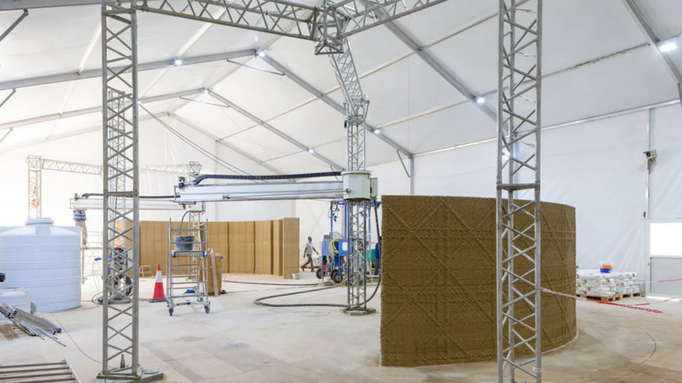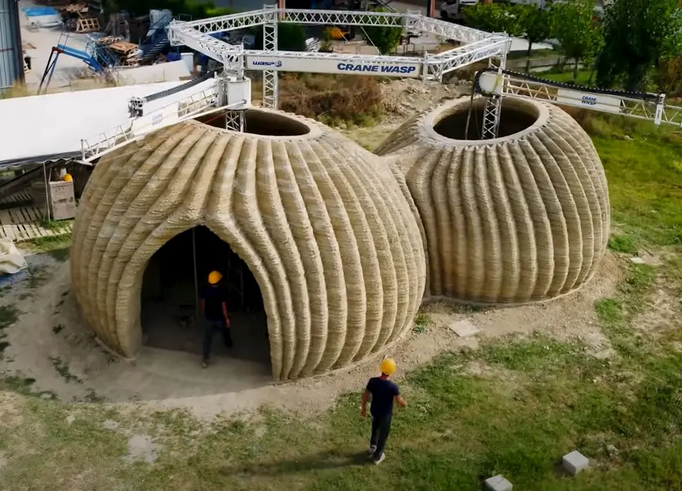The United Nations Development Program is planning to utilize advanced 3D printing equipment from WASP (World’s Advanced Saving Project) in Colombia, to help address housing shortages. They will use the Crane WASP that can print directly using natural resources like agricultural waste and nearby dirt instead of requiring concrete.
This equipment is versatile and mobile, making it ideal for use in difficult places where large, stationary machines can’t operate. It also has low energy consumption, making it suitable for remote areas.
 The potter wasp, which constructs its nests from natural materials, served as the inspiration for the Crane WASP’s development, which started in 2012. The goal was to develop a large-scale 3D printing technology that would enable the construction of buildings made of locally sourced, natural materials. It consists of a main printer unit that can be combined in various ways, with a print area of 8.2 meters in diameter by 3 meters in height.
The potter wasp, which constructs its nests from natural materials, served as the inspiration for the Crane WASP’s development, which started in 2012. The goal was to develop a large-scale 3D printing technology that would enable the construction of buildings made of locally sourced, natural materials. It consists of a main printer unit that can be combined in various ways, with a print area of 8.2 meters in diameter by 3 meters in height.
Colombia faces a significant housing challenge, with 3.7 million households—over a quarter of the nation’s total—experiencing a housing deficit. Two-thirds of these families also require structural improvements to their homes.
 The company hopes that the widespread use of these 3D printers will help overcome geographic barriers and promote more sustainable construction practices. As construction 3D printing continues to grow in popularity, the United Nations will likely consider utilizing this technology in other countries as well.
The company hopes that the widespread use of these 3D printers will help overcome geographic barriers and promote more sustainable construction practices. As construction 3D printing continues to grow in popularity, the United Nations will likely consider utilizing this technology in other countries as well.
You can read the original article and see several videos at interestingengineering.com

Hey check this out…
https://www.youtube.com/watch?v=ELihrjm7ffk&t=4s
Bob